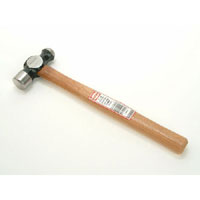I thought since lots of folks need to weld once in a while but don't weld for a living, a thread to post up welding questions would be worth while. Since welding questions often are really more fabrication questions and a good welder knows a lot more than just how to make a pretty bead, I'll try and keep this first post updated with the info condensed. If you have a specific or general welding question or maybe a problem about your project post up here and when the answer comes I'll update that into this first post. As much as possible I'll try and keep this to things that commonly occur with 4x4 fabrication. I'll leave that esoteric stuff up to the pros. Please feel free to correct me as I am not a professional welder.
General:
- Link to an article on Welding Distortion
- When you weld upside down remember you will likely get deeper penetration so watch out for burn through.
- Skip Weld(Stitch Weld) and back-step help reduce distortion.
- T-Joints (other types do too) need to be stitched or warping will occur as the bead cools and the metal shrinks. Do not do one long continuous bead. Use multiple tacks to help hold pieces in place.
- Stitch weld. This helps prevent warping. It may look like you weld as if you are leaving bread crumbs but you actually put one weld down, go to a different part of the material away from your most recent weld, and continue to weld so that you are not building up heat in one area.
Hammering out your stitch welds with a ball peen hammer can help reduce distortion as well. An air hammer is a lot easier but whatever works to slightly deform the weld bead and allow it to relieve the stress.
MIG: Those new people that are looking into buying a machine, for best all around use, buy a Mig. Mig by far is the easiest to see good result. - 4runnerchevy -
TIG: If you are looking at a TIG because you want to weld other metals you'll need a TIG machine that does A/C to weld some metals like aluminum. D/C TIGs are relatively affordable you can buy one in the hundreds. An A/C D/C TIG that can weld just about any metal mild steel, stainless steel, copper, gold, titanium, magnesium, etc. and it might seem like the way to go because of the freedom but for what we as wheelers do it's rare that anyone works with anything other than regular mild steel due to cost. TIG also normally uses Argon for a shielding gas instead of CO2. My tank which stands about 4 feet tall costs about $60 to fill and I'd estimate it'll take about 3 tanks of argon to finish my stainless 304 rear bumper with a swing out carrier. It's also a lot slower. I can weld 3/16" steel with a butt joint at about 10 inch/min with TIG. MIG is several times faster. TIG also takes a little more coordination. I however learned on TIG so I can attest it's not that hard. If you are a perfectionist or a tweak there's a reason why airplane parts, race cars, and other high end welds choose TIG. Control.
Aluminum: If you want to weld aluminum you will need a welder that does A/C. With MIG you will likely want to buy a hand spool instead of running aluminum wire through the machine. A hand spool tends to have less problems with the softer aluminum jamming.









 Reply With Quote
Reply With Quote